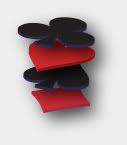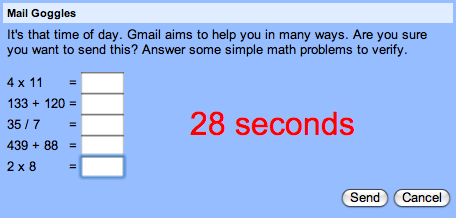 With so many magicians interested in mathematical magic, it's not surprising that so many magicians have developed so many original mathematical principles.
With so many magicians interested in mathematical magic, it's not surprising that so many magicians have developed so many original mathematical principles.
One magician, P. Howard Lyons, who is known among magicians as the publisher of Ibidem magazine, developed an amazing procedure for divisibility by 7 that's different from the other such tests I described last month.
Lyons first revealed the following method in Martin Gardner's The Unexpected Hanging And Other Mathematical Diversions. Before learning this method, you should know your multiples of 7 up to 100 by heart.
As an example number, let's see if 3,846,532,658,790 is divisible by 7.
1) Break the number up into 2-digit pairs, working from right to left. Since our example contains 13 digits, the leftmost one will wind up as a solo:
3 84 65 32 65 87 90
2) Next, below each number pair, write the difference between that number pair and the nearest multiple of 7. If any of the numbers are below 7, just leave them as they are:
3 84 65 32 65 87 90
3 0 2 4 2 3 6
Make sure you understand this step. The 90 at the right has a 1 below it because the closest multiple of 7 below it is 84, and 90 is 6 greater than 84. 65? The closest multiple below it is 63, and 65-63 equals 2, so we write a 2 below it. If you're familiar with
modular arithmetic, you're simply writing down the answer to each number modulo 7. Since all the numbers will range from 0 to 7, you'll wind up with a row of all single digits.
3) Now break the row of single digits into groups of 3, again from right to left, and put them below one another:
3 84 65 32 65 87 90
3 0 2 4 2 3 6
2 3 6
0 2 4
3
4) With these numbers arranged, you're going to add them. However, you're not going to carry any numbers. If any series of numbers adds up to 10 or more, you're just going to write the whole number down.
3 84 65 32 65 87 90
3 0 2 4 2 3 6
2 3 6
0 2 4
3
-------
2 5 13
5) For each number in this new “total”, you're going to cast out 7s, similar to the way you did in step 2:
3 84 65 32 65 87 90
3 0 2 4 2 3 6
2 3 6
0 2 4
3
-------
2 5 13
2 5 6
In our example, the only number over 7 is 13, so we reduce that to 6, as 13-7=6.
6) The 3 single-digit numbers you get in step 5 will now be used to create two 2-digit numbers. The leftmost digit and the middle digit are paired to make the first number, and then the middle digit and the rightmost digit are paired to make the other one:
3 84 65 32 65 87 90
3 0 2 4 2 3 6
2 3 6
0 2 4
3
-------
2 5 13
2 5 6
25 56
Yes, the middle digit is used twice.
7) Each number in this pair of numbers is, once again, subjected to casting out 7s as in steps 2 and 5.
3 84 65 32 65 87 90
3 0 2 4 2 3 6
2 3 6
0 2 4
3
-------
2 5 13
2 5 6
25 56
4 0
8) We're almost there. For this last step, you take the rightmost digit from this step, and subtract the leftmost digit from it. If the rightmost digit is lower than the rightmost digit, as in our example, add 7 to the rightmost digit. This will prevent having to work with negative numbers:
3 84 65 32 65 87 90
3 0 2 4 2 3 6
2 3 6
0 2 4
3
-------
2 5 13
2 5 6
25 56
4 0
4 7
7 - 4 = 3
All this has reduced our original 13-digit number, 3,846,532,658,790, down to a 3. What does this mean?
If the single digit answer you get at the end is a 0, then your original number is evenly divisible by 7. If you get any other number, your original number isn't divisible by 7.
Now, in
my previous post about divisibility by 7, there are shorter and quicker methods for determining if a number is evenly divisible by 7, so you may be wondering why I've taken the time to teach this particular method. Well, it offers a bonus that the other methods don't.
The resulting number in this method also tells you exactly how far over a multiple of 7 you are! Our example gave us a result of 3, so we know that 3,846,532,658,790 is 3 greater than a multiple of 7. If you start up your calculators, and work out (3,846,532,658,790-3)/7, you'll get 549,504,665,541
exactly.
With 7 or more digits, you really should use this method on paper. However, if you're given a number of 6 digits or less, you can do it in your head. This is because 6 digits will result in only 3 digits after step 3, and you'll be able to effectively skip steps 4 through 6.
If you look into the original article in
Martin Gardner's The Unexpected Hanging And Other Mathematical Diversions, you'll also learn a great lightning calculation feat using this approach that will make you seem like a genius to your audiences!

 No, I don't have the headline backwards. StackView is still only available as a Windows program, but recent developments have actually made it easier and better for Macs to run StackView!
No, I don't have the headline backwards. StackView is still only available as a Windows program, but recent developments have actually made it easier and better for Macs to run StackView!

 Today is just a short entry, as I've been spending my time working an upcoming puzzle for
Today is just a short entry, as I've been spending my time working an upcoming puzzle for  This edition of snippets is dedicated to the humble deck of playing cards!
This edition of snippets is dedicated to the humble deck of playing cards!

 Yes, I know I'm using the “link” graphic I usually use for
Yes, I know I'm using the “link” graphic I usually use for 


 A while back,
A while back, 




